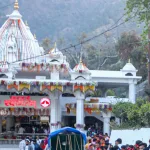From nature to culture, an educator Grace Paljor is promoting the valley of Kashmir through her books comprising rhymes and folktales. Her books are instilling a new life to the age-old Kashmiri folklore characters, Shalkak and Kawakoor that children of every household used to be acquainted with.
Unlike other authors of Kashmir, her target audience is children who barely find books about their culture and place to read and rejoice.
After an overwhelming response to Sheene-Pippen – a series of three children’s books about the biodiversity, tradition and local culture of Kashmir, she is now working on a collection of poems about Kashmir and stories for slightly older children. Also, she is working on two folktales of Ladakh and a popular folktale of Kashmir is in the initial stages of publishing.
Paljor, who is also the Principal of St. Paul’s International Academy in Srinagar finds a lack of children’s literature in Kashmir specially in English.
Kashmir, being a land of stories, had a custom of Dastango for which story-tellers who would travel from village to village and narrate stories. During winters, elders of the family would narrate the stories to children. With time, the art of storytelling was replaced by the advent of media and changed social structure.
She said, “First TV and now social media has replaced the warmth of a grandparents’ embrace who would sing lullabies or enchant children with treasures of folklore that would remain embedded in their memories. Parents are busy in the mundane, their jobs, social and religious obligations, helping children with their studies etc. unless one makes it a priority it is difficult to give importance to story-telling and reading.”
Paljor attempts to revive the art of story-telling with her school children. During summers, she conducts storytelling sessions in the morning hours in the school. “Initially I used to tell stories to kids and now they too come up with stories and narrate to everyone. Unless you won’t start it, they won’t follow,” she added.
She sees a ray of hope that the New Education Policy 2020 has mandated the use of story-telling in the teaching-learning process.
She feels that it is important for a child to be taught first about her or his immediate surroundings. Believing that the socio-cultural fabric of Kashmiri society is woven in the warp and weft of nature and its bounties, she said that the beauty of its changing seasons evokes a sense of pride in every child through the rhymes.
Each book in the series contains familiar rhymes and stories as well as unique ones inspired by the Valley of Kashmir. Be it Samovar, Chinar trees or Noon-chai she has penned down poems and rhymes incorporating from the familiar surroundings for a child growing up in Kashmir.
She said that the delightful illustrations alongside the rhymes and stories contextualize Kashmir and acquaints children with long-forgotten folk tales of the region.
She has been managing the school for 23 years where she has incorporated an extended curriculum about the unique cultural heritage, history, flora and fauna of Kashmir for the students. The ‘World Around Us’ section in the Sheene-Pippen series in compliance with the National Education Policy (NEP) 2020 which mandates the promotion of the mother tongue and bilingual learning in the formative years includes nomenclature in Kashmiri language and script.
“Our Text-books are made for Pan-India. Unfortunately, our text-books do not cover the unique flora and fauna of the Valley. Our children miss out on learning about their immediate surroundings. Children know about the anaconda and albatross but have no clue about the hangul or the blue whistling thrush which is such a pity. A hands-on approach works best for a child. Nature walks, bird-watching, games, songs, poems, skits, art and craft activities related with nature allows a student to explore and have a first-hand experience,” she said.
In her school, the posters on the walls feature the flora and fauna of Kashmir with nomenclature in the Kashmiri language to foster awareness among children with regard to their immediate surroundings. She said nature study should be a part of education right from Nursery.
She was born in Srinagar but ethnically belongs to Ladakh and grew up in DehraDun. Apart from being a nature educator, she is a bird watcher as well as enjoys art, painting and craft as hobbies and loves outdoor trips in nature.
As an educator, she believes that the children are really going to benefit with the New Education Policy (NEP) but the Government needs to do more to inform the masses and parents in particular.
“There needs to be a lot to be done to implement the true essence of the NEP. In most cases, students are pressured by their parents regarding their choice of stream and career. With the implementation of the NEP, I think students will be spoiled for choice and may be more confused as the Science and Humanities divide has been blurred,” she said, adding that career counselors need to guide the students to make the right decision for their future.
“The NEP talks of experiential learning and doing away with rote learning, the use of mother tongue as a medium of instruction, Coding to be introduced from Class 6 and IT to cover AI, AR and robotics as well. It is a tall order to fulfill as schools have to equip themselves but it’s not that it cannot be done. Change must be embraced as times evolve and we have to keep up with our children in this day and age when technology is just a swipe away,” she said.
Talking about her contribution to unearth the rich treasure of folktales, she said that there is no dearth of talent in Kashmir.
“The folktales and legends that I have compiled may be a drop in the ocean towards preservation of the folklore which will otherwise vanish into oblivion. I just hope many more authors and artists would get inspired to write and illustrate for children of Kashmir. The age-old traditions have sadly faded away. I want to do my bit to preserve these stories and make it accessible for our children,” she concluded.





